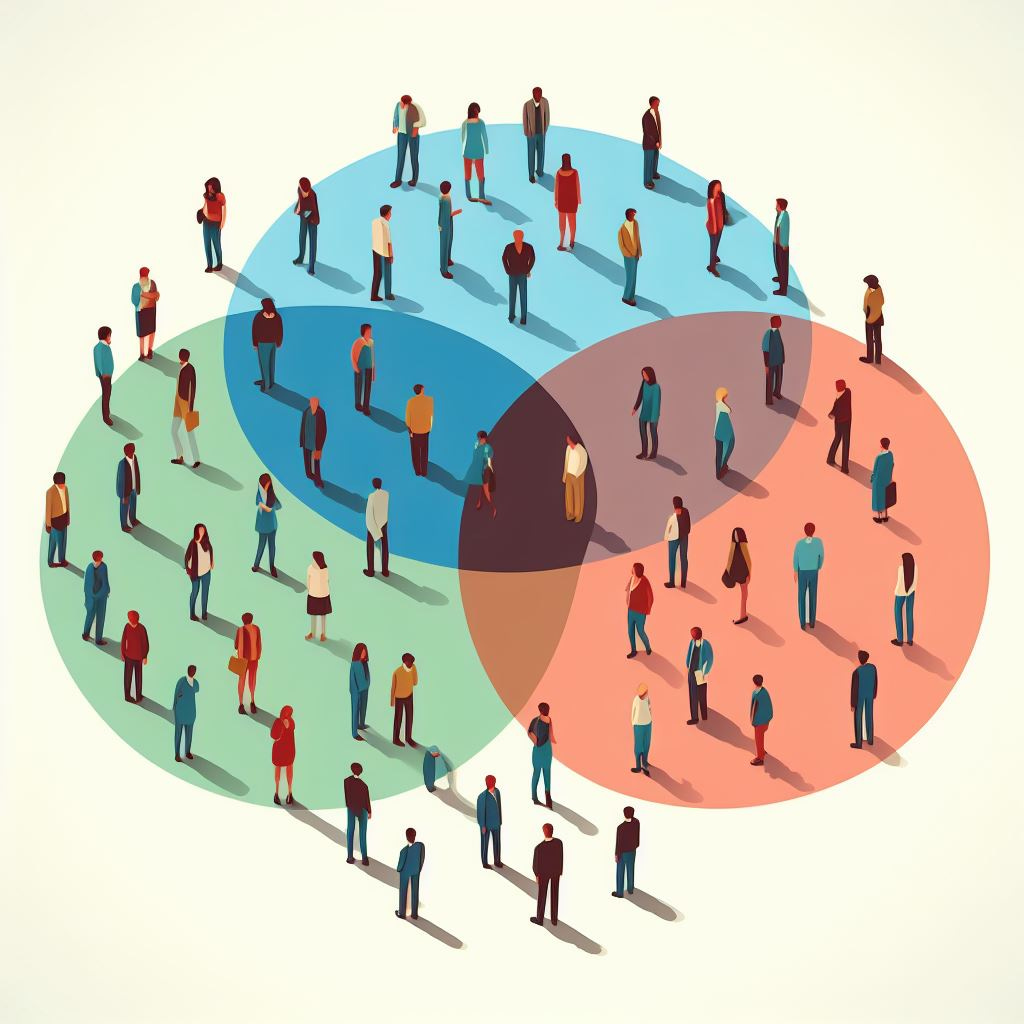Julia Freeland Fisher and I worked together at the Clayton Christensen Institute for Disruptive Innovation. She is the author of Who You Know, an incredible book that surfaced insights about social capital before social capital was really a thing that educators discussed much.
For those in need of a quick primer, “social capital is an asset, just like financial—or even human capital,” Fisher explains. “It describes your access to and ability to mobilize a network. The capital in social capital is the resources contained in your network that can help you get by and get ahead.”
People used to view social capital as largely fixed or inherited. Social networks appeared to be largely based on the networks of parents who, in turn, passed their networks on to their children.
More recently, a growing body of research suggests that building and mobilizing social capital is teachable, but individuals need both help-seeking skills as well as access to well-resourced networks that are otherwise out of reach. Unfortunately, however, our institutions—our colleges, training providers, and employers—don’t necessarily teach explicit and consistent ways of building social capital.
Social Capital and the Future of Work
The concept of social capital is critical to unpack when it comes to the future of work. Freeland Fisher emphasizes that when we consider skills development, we have to move beyond employer demand and optimize for Skills + Networks. She explains:
If you think about skills-focused initiatives, what we're often optimizing for are what employers are demanding, which makes sense. But if you add networks to that equation, what you're starting to optimize for is also individual optionality—meaning I am a person who is getting trained in skills. I am upskilling, but I also have access to myriad, different connections that can provide different inroads into not just first jobs and but also into second, third and fourth jobs. Having diverse and widespread networks is particularly critical in a turbulent labor market.
True upward mobility is about optionality, and any upskilling or reskilling initiative must consider not just the next job but also the next and the next job after that.
Unfortunately, we often leave who students know to chance. Learners need to understand that they have social credentials, too. Getting hired is an inherently social process built on legacy practices of referrals, networks, and connections: 85% of job seekers land positions through connections; 53% of all student internships come through personal connections.
In an effort to avert risk, hiring managers often rely heavily on referrals to assure that the new hire will be the right hire. For all of the cool, newfangled technologies out there today, so much of hiring has remained analog or based on interactions like that trusted phone call or referral usually within a privileged network grounded in alumni groups, family connections, or professional associations.
To obscure matters more, jobs are not always posted. Matt Youngquist, the president of Career Horizons shares: “At least 70 percent, if not 80 percent, of jobs are not published. And yet most people — they are spending 70 or 80 percent of their time surfing the net versus getting out there, talking to employers, taking some chances [and] realizing that the vast majority of hiring is friends and acquaintances hiring other trusted friends and acquaintances.”
So, the question becomes: How can we equip prospective workers with networks they can continue to tap into over time?
The Promise of Weak Ties
Freeland Fisher points to a counterintuitive concept first surfaced by Stanford professor Mark Granovetter’s 1974 book, Getting a Job: We are more likely to find a job through a weak tie, a connection that is more of an acquaintance than a true and trusted friend. A more recent LinkedIn study confirmed Granovetter’s theory by illuminating that “moderately weak ties where two people shared roughly 10 acquaintances mattered the most.”
This is a huge finding because we assume that we get jobs through the people who know us well—the people who have worked with us, who trust us and have seen us demonstrate our skills or expertise up close. But it turns out that it’s enough to know someone through a weak tie only.
The strong ties we have often overlap in terms of the networks we share; we share far more than those 10 acquaintances. But with folks we don’t know very well, it’s highly likely that they might have greater reach to more people outside of our networks and to the information and connections contained in those networks. That’s extremely beneficial as we search for new opportunities and new organizations we’re not yet aware of.
Diversifying a Weak-tie Network
So, what does cultivating a weak-tie network look like in practice?
Nitzan Pelman started the nonprofit Climb Hire and is a close collaborator of Freeland Fisher’s. Some of the biggest learnings for Pelman over the years have revolved around how to support Climbers as they build relationships with weak ties and grow their own social capital.
Before the program, Climbers are often juggling multiple minimum-wage jobs. Climb Hire enables both digital skills training in Salesforce Administration as well as professional skills training, so that within six months, they are earning an average of $55k to $65k per year.
Skills building is core to Climb Hire’s work, but it’s just as critical, Pelman says, to ensure that her organization is also brokering relationships with industry professionals and having Climbers begin to build “bridging” social capital through weak ties.
Ultimately, cross-class connections can lead to greater upward mobility, as Harvard professor Raj Chetty has shown through his research on social capital. But in order for these weak-tie networks to be fruitful, Climbers need to learn the art and science of help-seeking conversations.
A Clear Ask
This is a key insight that comes from Climb Hire’s work in the field. It’s important to underscore that the particular element I’m going to focus on comes at the tail end of a relationship-building conversation.
Job seekers cannot be transactional with a weak tie. These help-seeking conversations still require a scaffolded approach that starts with a back and forth with open-ended questions and a search for similarities (homophily) or ways to build trust through similarities and shared interests. It’s only after all of that genuine relationship building that we can get to a clear ask.
Now, think about the last time you’ve made a career or job switch. Typically, when we begin these exploratory conversations, we’ll mention vaguely to people within our network that we’re looking for our next opportunity. Super vague and not helpful.
But if we were to say instead, “I noticed that you know these three people, and I’d like to meet them. Would you be able to make an intro? Here's a short blurb about me if that helps.” Then, as Pelman explains:
the job seeker holds the mental load, and they do all the work and then they make a really concrete ask. That is when social capital gets unlocked. And to be perfectly honest, we didn't teach all of that at Climb Hire–that last piece.… And so now we're really doubling down on the ask and how you know how to ask and how you do the research behind that ask so that you can leverage those relationships.
Acquaintances or weak ties are powerful because they tap into secondary and tertiary networks that job seekers typically don’t have access to through their closer or strong ties. But in order to get to a meaningful introduction, a job seeker must make a clear and specific ask.
This advice is helpful not only for low-income learners engaging with middle-class professionals but also for all of us as job seekers as we cultivate our weak-tie networks.
Try it in your next help-seeking conversation, and remember that the social process of hiring doesn’t depend on strong ties but weak ties, plus a clear ask. Of course, in order to get to that clear ask, you yourself have to know precisely what you’re seeking.
In a more equitable world, our institutions and employers would be fairer and more effective brokers of social capital. But for now, the onus is on us as job seekers to carry that mental load. It’s how we’ll navigate not just our next job change but the many more transitions to come.
Dr. Michelle R. Weise is the author of Long Life Learning: Preparing for Jobs that Don’t Even Exist Yet and leads Rise and Design, a strategic consulting and advisory service for businesses and higher education institutions.






